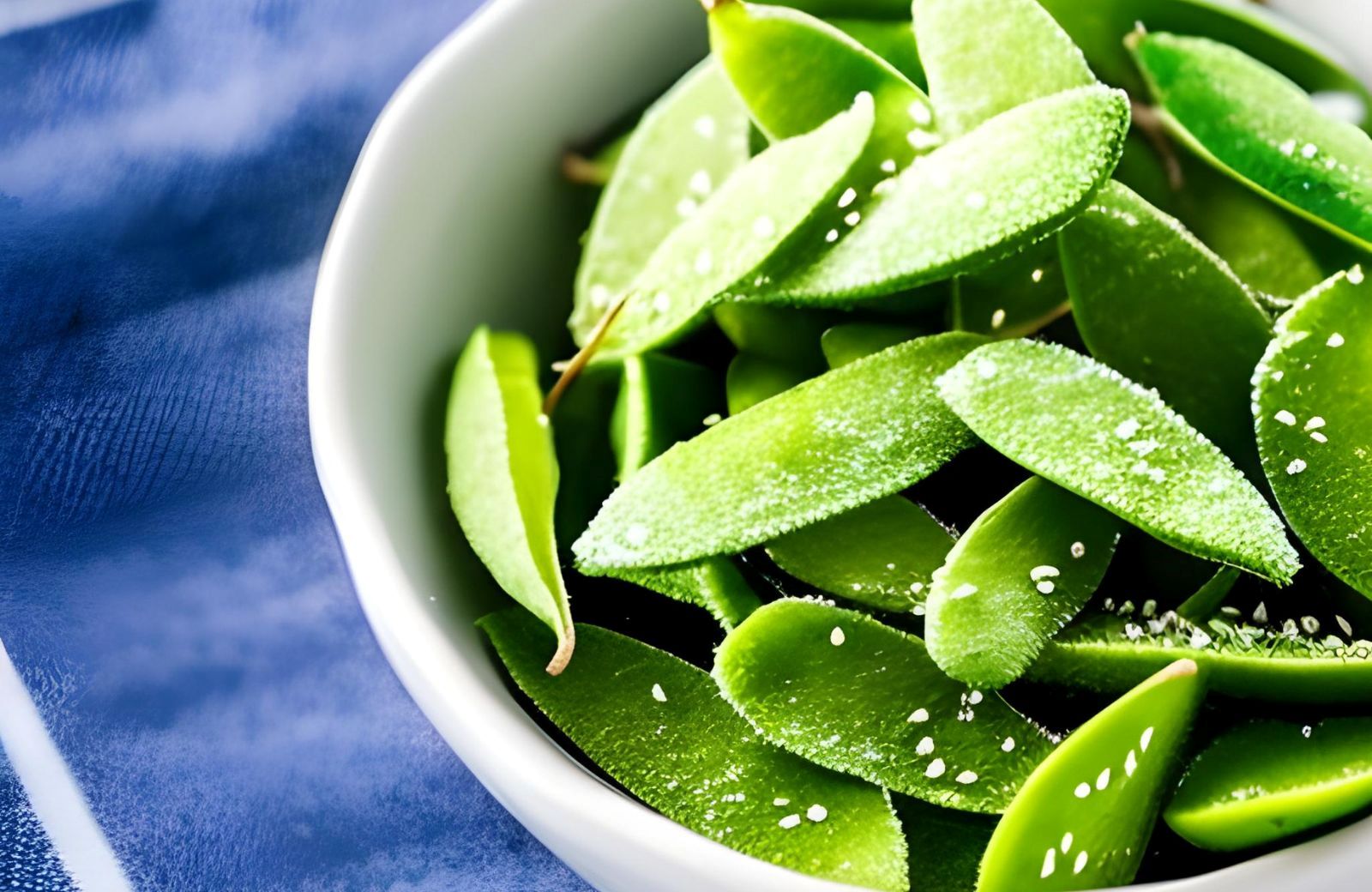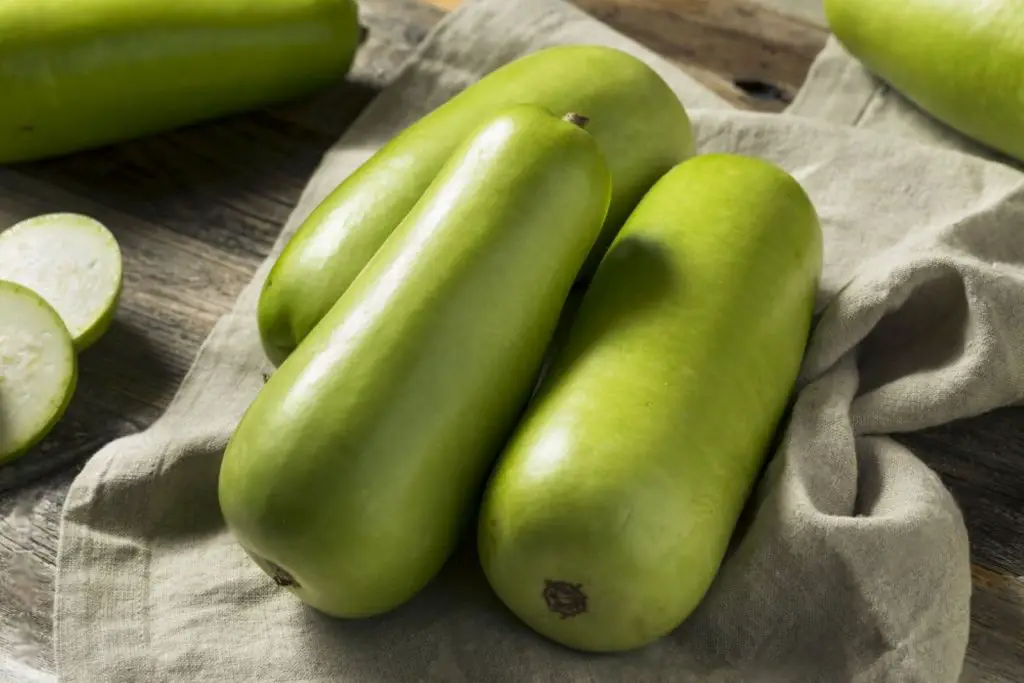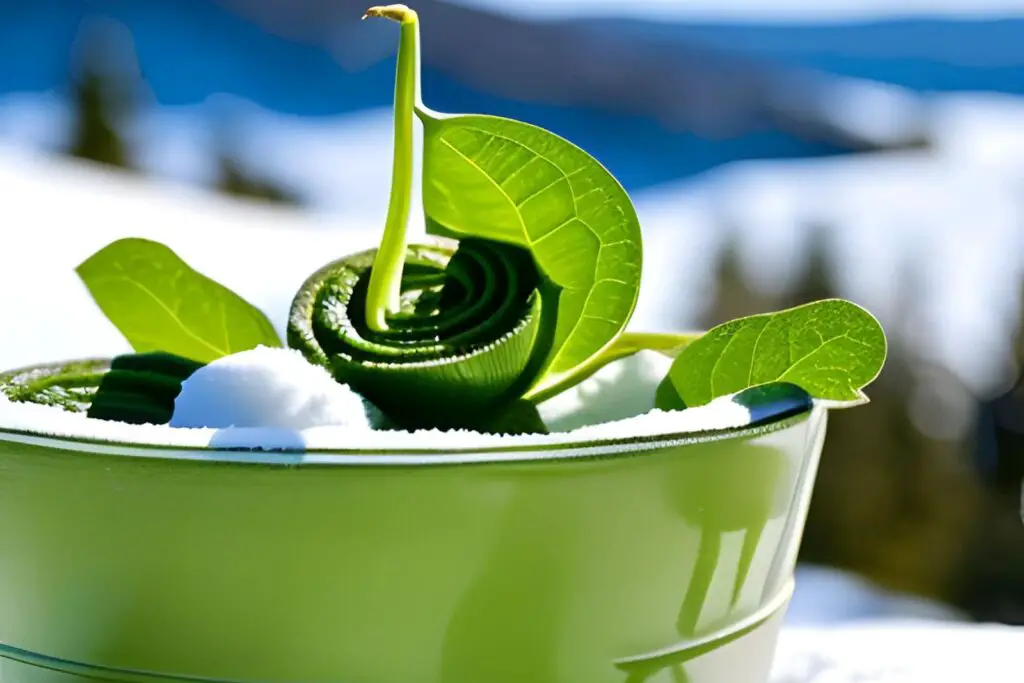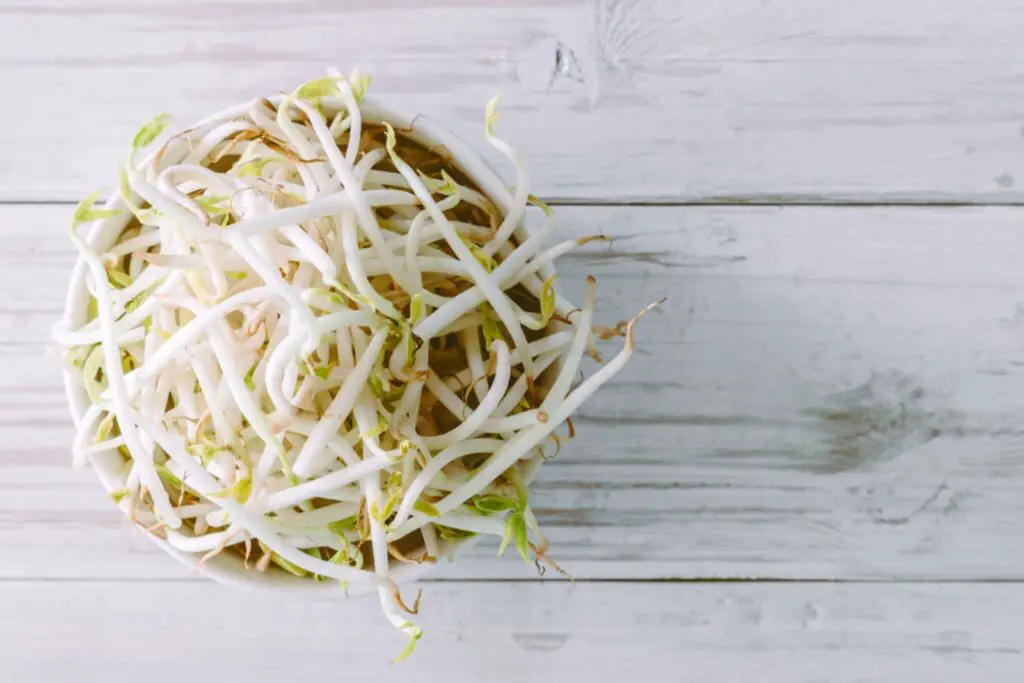
Edamame, also known as young soybeans, are vibrant green pods filled with tender and nutritious beans. These little legumes are a popular ingredient in various Asian cuisines and are highly regarded for their delightful taste and health benefits. If you have a surplus of fresh edamame or want to extend their shelf life, freezing them is a fantastic option. Freezing edamame allows you to lock in their vibrant color, delicate texture, and nutritional value, ensuring that you can enjoy these tasty treats whenever you crave them. Whether you plan to add them to stir-fries, salads, or simply enjoy them as a snack, knowing the proper steps to freeze edamame will help you savor their goodness long after their peak season.
Here’s how you can freeze edamame:
- Step 1: Wash the edamame pods in cold water.
- Step 2: Bring a pot of water to a boil to taste.
- Step 3: Add the edamame pods to the boiling water.
- Step 4: Drain the edamame immediately.
- Step 5: Drain them and pat them dry with a clean towel.
- Step 6: Spread the edamame out in a single layer.
- Step 7: Place the tray in the freezer.
- Step 8: Transfer them to a freezer-safe container or bag.
Step 1: Wash the edamame pods in cold water.
Washing the edamame pods in cold water is the first step in preparing them for freezing because it helps to remove any dirt, debris, or other contaminants that may be present on the surface of the pods. This is important because it ensures that the edamame is clean and safe to eat.
When washing the edamame pods, it’s important to use cold water because hot water can cause the pods to start cooking, which is not what you want at this stage. Instead, cold water will help to remove any surface dirt or debris without cooking the edamame.
To wash the edamame pods, simply place them in a colander or strainer and run cold water over them for a few seconds. You can also rub the pods gently with your hands to help remove any stubborn dirt or debris. Once the edamame pods are washed, you can move on to the next step in the freezing process.
Step 2: Bring a pot of water to a boil to taste.
Boiling the edamame pods briefly is an important step because it helps to preserve the texture and flavor of the edamame. Adding salt to the water also helps to enhance the natural flavor of the edamame.
To boil the edamame pods, fill a pot with enough water to cover the pods, and bring it to a rolling boil over high heat. Once the water is boiling, add salt to taste. The amount of salt you use will depend on your personal preference, but about 1 teaspoon per quart of water is a good place to start.
Once the water is salted, add the edamame pods to the pot and let them cook for about 2-3 minutes. Be careful not to overcook them, as this can cause the edamame to become mushy and lose its texture.
After the edamame pods have cooked for a few minutes, remove them from the pot and immediately transfer them to a bowl of ice water. This will help to stop the cooking process and cool the edamame down quickly, which is an important step in freezing edamame.
Step 3: Add the edamame pods to the boiling water.
The third step in freezing edamame is to add the edamame pods to the boiling water and let them cook for about 2-3 minutes. Boiling the edamame briefly is an important step because it helps to blanch the pods, which in turn helps to preserve their flavor, texture, and color.
Blanching is a cooking technique that involves briefly boiling a food item and then immediately transferring it to an ice bath to stop the cooking process. In the case of edamame, boiling the pods for 2-3 minutes helps to cook them slightly and make them easier to remove from the pods. It also helps to kill any bacteria on the surface of the pods.
After the edamame pods have cooked for 2-3 minutes, they should be removed from the boiling water and immediately transferred to a bowl of ice water. This will help to stop the cooking process and cool the edamame down quickly, which is an important step in freezing edamame. Once the edamame is cool, it can be drained and prepared for freezing.
Step 4: Drain the edamame immediately.
This step is critical because it helps to stop the cooking process and prevent the edamame from becoming overcooked or mushy.
Boiling the edamame pods for 2-3 minutes will cook them slightly and make them easier to remove from the pods, but it is important to stop the cooking process as soon as possible to ensure that the edamame remains crisp and tender. By transferring the edamame to a bowl of ice water immediately after boiling, the pods will rapidly cool down and stop cooking, preserving their texture and flavor.
The ice water bath also serves another important purpose in freezing edamame. The rapid cooling process helps to set the color of the edamame and prevent it from discoloring or turning brown. This is important because browned or discolored edamame will not look as appetizing or appealing, even if it is still safe to eat.
Once the edamame has been cooled in the ice water bath, it can be drained and patted dry before being frozen.
Step 5: Drain them and pat them dry with a clean towel.
After the edamame pods have been cooled in the ice water bath, they should be drained to remove any excess water. Then, the pods should be patted dry with a clean towel to remove any remaining moisture. It is important to use a clean towel to avoid transferring any bacteria or contaminants to the edamame.
Once the edamame pods are dry, they can be placed in an airtight container or freezer bag for freezing. If using a freezer bag, it is a good idea to label it with the date and contents for easy identification later on.
By patting the edamame pods dry before freezing, you can help to ensure that they will freeze evenly and maintain their quality and flavor for longer periods. This step will help to prevent freezer burn or other issues that can arise from excess moisture in the freezer.
Step 6: Spread the edamame out in a single layer.
After patting the edamame dry, they should be spread out in a single layer on a baking sheet or tray lined with parchment paper. The parchment paper will prevent the edamame from sticking to the tray and make it easier to remove them later.
By spreading the edamame out in a single layer, they will freeze faster and more evenly. This is important because rapid freezing helps to preserve the texture and flavor of the edamame. If the edamame pods are packed too tightly together, they will take longer to freeze and may not freeze evenly.
Once the edamame pods have frozen solid, they can be transferred to an airtight container or freezer bag for long-term storage in the freezer. By freezing the edamame in a single layer on a baking sheet or tray lined with parchment paper, you can ensure that they will maintain their quality and flavor for longer periods of time.
Step 7: Place the tray in the freezer.
Freezing the edamame for 2-3 hours or until they are completely frozen will help to preserve its texture and flavor for longer periods of time. If the edamame is not frozen completely, it may develop ice crystals, freezer burn or lose its texture and flavor.
It is important to note that the freezing time can vary depending on the freezer temperature, the amount of edamame, and the thickness of the layer. It is recommended to freeze the edamame pods until they are completely solid and firm to the touch.
Once the edamame is fully frozen, it can be transferred to an airtight container or freezer bag for long-term storage in the freezer. By following these steps, you can freeze edamame pods in a way that will help them to maintain their quality and freshness for up to 8 months in the freezer.
Step 8: Transfer them to a freezer-safe container or bag.
When transferring the edamame to a freezer-safe container or bag, it is important to remove as much air as possible before sealing. This can be done by gently pressing down on the bag or container to remove any excess air, or by using a vacuum sealer to remove the air completely. Removing air from the container or bag helps to prevent freezer burn and keeps the edamame fresh for longer periods of time.
Once the edamame is stored in the freezer-safe container or bag, it should be labeled with the date and contents for easy identification later on. The edamame can then be stored in the freezer for up to 8 months.
By following these steps, you can freeze edamame in a way that helps to preserve its texture and flavor for long periods of time. When you’re ready to enjoy the edamame, simply thaw them in the refrigerator or at room temperature, or cook them directly from frozen in boiling water for 5-7 minutes.
What are the best-recommended bags and containers for freezing edamame?
- Freezer bags: Freezer bags are a popular choice for freezing edamame. They are designed to withstand low temperatures and prevent freezer burn, which can damage the texture and flavor of frozen foods.
- Vacuum-sealed bags: Vacuum-sealed bags are another great option for freezing edamame. They remove all of the air from the bag, which helps to prevent freezer burn and keep the edamame fresh for longer periods of time.
- Plastic containers: Plastic containers are another good choice for freezing edamame. They are durable, easy to use, and can be reused multiple times.
- Glass containers: Glass containers are also a good option for freezing edamame. They are sturdy, easy to clean, and can be used for a variety of other purposes in the kitchen.
Reminder: It’s important to choose bags or containers that are specifically designed for freezer use, as regular storage bags or containers may not be able to withstand the low temperatures of the freezer. When using bags, make sure to squeeze out as much air as possible before sealing to prevent freezer burn. Whichever option you choose, make sure to label the container or bag with the date and contents for easy identification later on.
Additionally, when labeling the container or bag, it is important to write the date that the edamame was frozen and the contents, such as “frozen edamame, date frozen”. This will help you to identify the contents of the container or bag easily and determine the age of the frozen edamame.
Other related questions
How long can you store edamame in the freezer?
It is recommended to store the edamame in the freezer for up to 6 months to maintain its quality and flavor. After 6 months, the edamame may start to lose its texture and flavor, and it may not taste as good as it did when it was first frozen. It is also important to store the edamame in a part of the freezer where the temperature is consistently below 0°F (-18°C). This will help to prevent any thawing and refreezing of the edamame, which can negatively affect its quality.
How do you microwave frozen edamame?
To microwave frozen edamame, place the desired amount in a microwave-safe bowl with a splash of water. Cover the bowl with a microwave-safe lid or plate and microwave on high for 2-3 minutes or until heated through. Let the edamame sit for a minute before serving. Check the edamame frequently to prevent overcooking.
Can you thaw frozen edamame in the fridge?
Yes, you can thaw frozen edamame in the fridge. Simply place the frozen edamame in a covered container or plastic bag and let it thaw in the refrigerator overnight. This is a safe and convenient way to thaw frozen edamame, and it helps to preserve its texture and flavor.
What are other ways of thawing and reheating frozen edamame?
- Thawing in the refrigerator overnight and then steaming or boiling on the stove for 2-3 minutes.
- Thawing in a colander under cold running water for a few minutes and then microwaving, boiling, or steaming.
- Add the frozen edamame directly to soups, stews, or stir-fries and cook until heated through.
- Roasting the frozen edamame in the oven at 400°F for 15-20 minutes, until crispy and heated through.
These methods can help to thaw and reheat frozen edamame quickly and easily while preserving its texture and flavor.
Can I cook frozen edamame with the fresh ones?
It’s not recommended to cook frozen edamame with fresh ones, as they have different cooking times and textures. Cooking them together could result in uneven cooking, with some edamame being overcooked or undercooked. To ensure the best flavor and texture, it’s best to cook fresh and frozen edamame separately.
How can I tell if frozen edamame has gone bad?
Frozen edamame can go bad if they are not stored properly or if they are past their expiration date. Signs that frozen edamame has gone bad include a sour or off smell, a slimy texture, or discoloration. If the edamame smells bad, has an unusual texture, or has changed color, it’s best to discard it to avoid the risk of food poisoning. It’s important to always follow proper food storage and handling guidelines to ensure the safety and freshness of frozen edamame.
Is it better to freeze or refrigerate edamame?
It’s better to freeze edamame than to refrigerate it. Edamame is a fresh vegetable, and refrigerating it can cause it to spoil quickly. Freezing, on the other hand, preserves the edamame’s freshness and texture for an extended period of time. Properly frozen edamame can be stored for up to 6 months, making it a convenient and tasty snack or ingredient for a variety of dishes.
Does freezing edamame dry them out?
Freezing edamame does not necessarily dry them out if they are stored properly. However, if the edamame is not blanched before freezing or if they are left in the freezer for too long, they may become freezer burned and dry out. It’s important to store frozen edamame in an airtight container or bag to prevent moisture loss and freezer burn. Frozen edamame can maintain its moisture and flavor for up to 6 months if properly stored.
Can you refreeze edamame?
It is generally safe to refreeze edamame if it has been thawed in the refrigerator and has not been left at room temperature for more than 2 hours. However, refreezing edamame may affect its texture and quality, and it’s recommended to use thawed edamame within a few days of thawing to ensure optimal taste and freshness.








